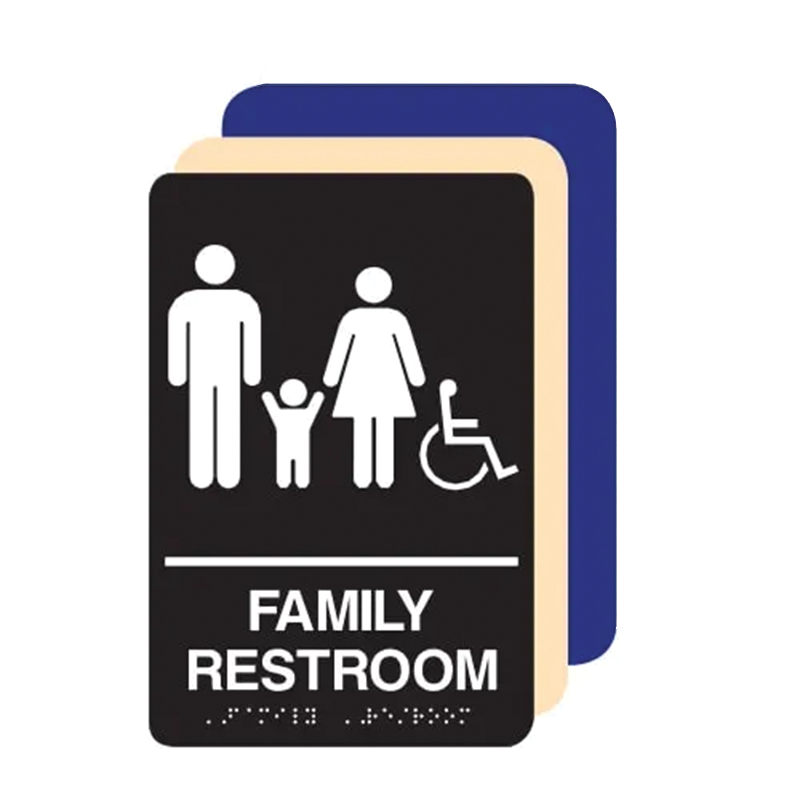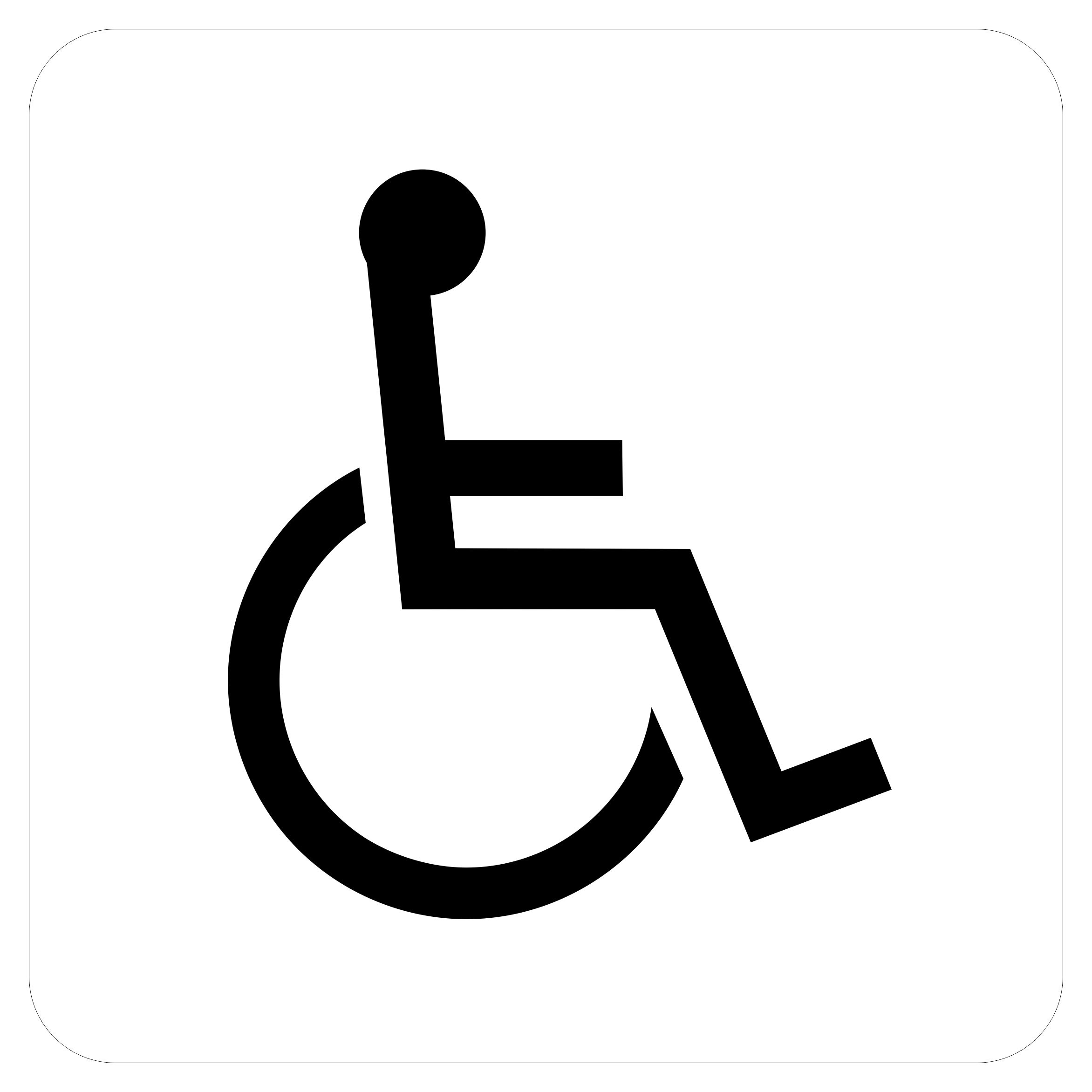Tailoring ADA Signs to Fulfill Your Certain Requirements
Checking Out the Key Functions of ADA Indications for Improved Ease Of Access
In the realm of availability, ADA signs offer as silent yet effective allies, ensuring that areas are accessible and inclusive for individuals with impairments. By integrating Braille and responsive aspects, these signs break obstacles for the visually damaged, while high-contrast shade schemes and readable fonts provide to varied visual requirements.
Importance of ADA Conformity
Making sure conformity with the Americans with Disabilities Act (ADA) is critical for fostering inclusivity and equal access in public spaces and offices. The ADA, passed in 1990, mandates that all public facilities, companies, and transportation services fit people with handicaps, ensuring they appreciate the same rights and chances as others. Conformity with ADA requirements not only fulfills legal responsibilities however additionally enhances an organization's track record by showing its dedication to variety and inclusivity.
One of the key aspects of ADA compliance is the implementation of accessible signs. ADA indications are created to guarantee that individuals with disabilities can quickly navigate through buildings and spaces. These indications should adhere to particular guidelines pertaining to dimension, font style, color contrast, and positioning to ensure visibility and readability for all. Correctly implemented ADA signage assists get rid of barriers that people with disabilities frequently run into, consequently advertising their independence and confidence (ADA Signs).
Additionally, adhering to ADA laws can minimize the danger of potential fines and lawful repercussions. Organizations that fail to adhere to ADA standards might face claims or fines, which can be both harmful and economically difficult to their public photo. Therefore, ADA conformity is integral to cultivating a fair atmosphere for every person.
Braille and Tactile Components
The unification of Braille and tactile aspects into ADA signs personifies the concepts of accessibility and inclusivity. These attributes are important for people who are blind or visually impaired, allowing them to navigate public areas with greater independence and confidence. Braille, a responsive writing system, is vital in providing composed info in a layout that can be quickly regarded through touch. It is generally positioned underneath the matching message on signage to make sure that people can access the details without visual support.
Responsive elements prolong past Braille and include elevated signs and personalities. These components are designed to be discernible by touch, permitting individuals to determine space numbers, bathrooms, exits, and other vital areas. The ADA establishes details guidelines regarding the size, spacing, and positioning of these tactile elements to enhance readability and ensure consistency across various atmospheres.

High-Contrast Color Design
High-contrast color pattern play a crucial duty in enhancing the visibility and readability of ADA signs for individuals with visual problems. These plans are vital as they optimize the difference in light reflectance between message and history, ensuring that signs are conveniently discernible, even from a range. The Americans with Disabilities Act (ADA) mandates using particular shade contrasts to suit those with limited vision, making it an essential element of conformity.
The efficacy of high-contrast shades hinges on their capability to stand out in numerous lights problems, consisting of poorly lit settings and areas with glow. Usually, dark text on a light history or light text on a dark history is utilized to attain optimal comparison. For example, black text on a white or yellow background provides a raw visual difference that aids in quick recognition and understanding.

Legible Fonts and Text Size
When taking into consideration the layout of ADA signs, the selection of readable fonts and appropriate message dimension can not be overemphasized. These aspects are critical for making sure that indicators are easily accessible to people with visual disabilities. The Americans with Disabilities Act (ADA) mandates that font styles have to be sans-serif and not italic, oblique, manuscript, very ornamental, or of unusual check it out form. These demands aid ensure that the message is quickly understandable from a range which the characters are distinct to varied target markets.
According to ADA standards, the minimum message height need to be 5/8 inch, and it should raise proportionally with watching range. Uniformity in message dimension adds to a natural visual experience, helping individuals in navigating environments efficiently.
In addition, spacing between lines and letters is important to clarity. Ample spacing avoids characters from appearing crowded, improving readability. By sticking to these criteria, designers can considerably enhance availability, ensuring that signage serves its intended purpose for all people, despite their visual capabilities.
Reliable Positioning Approaches
Strategic positioning of ADA signage is vital for maximizing ease of access and ensuring compliance with lawful criteria. ADA standards specify that indicators need to be placed at a height in between 48 to 60 inches from the ground to guarantee they are within the line of view for both standing and seated individuals.
Additionally, indicators have to be put nearby to the lock side of doors to enable easy identification prior to entry. Consistency in indication positioning throughout a center boosts predictability, reducing complication and boosting overall customer experience.
Conclusion
ADA indications play an essential duty in promoting accessibility by integrating features that deal with the demands of people with specials needs. These aspects jointly promote a comprehensive setting, underscoring the importance of ADA compliance in ensuring equal gain access to for all.
In the realm of access, ADA signs serve as quiet yet powerful allies, making sure that areas are accessible and inclusive for individuals with specials needs. The ADA, established in 1990, mandates that all public facilities, companies, and transportation solutions suit individuals with disabilities, guaranteeing they appreciate the exact same civil liberties and opportunities as others. ADA Signs. ADA signs are developed to make certain that individuals with disabilities can easily browse via buildings and rooms. ADA get more guidelines stipulate that indications should be installed at a height in between 48 to 60 inches from the ground to guarantee they are within the line of view for both standing and seated people.ADA indicators play a crucial function in promoting availability by integrating his response features that deal with the needs of people with impairments